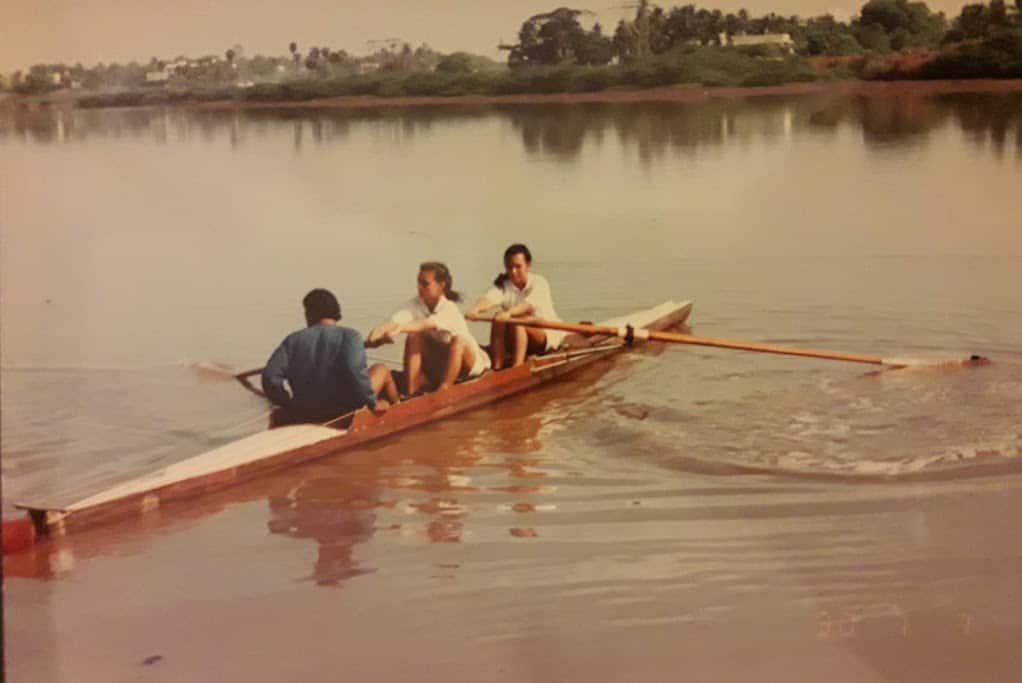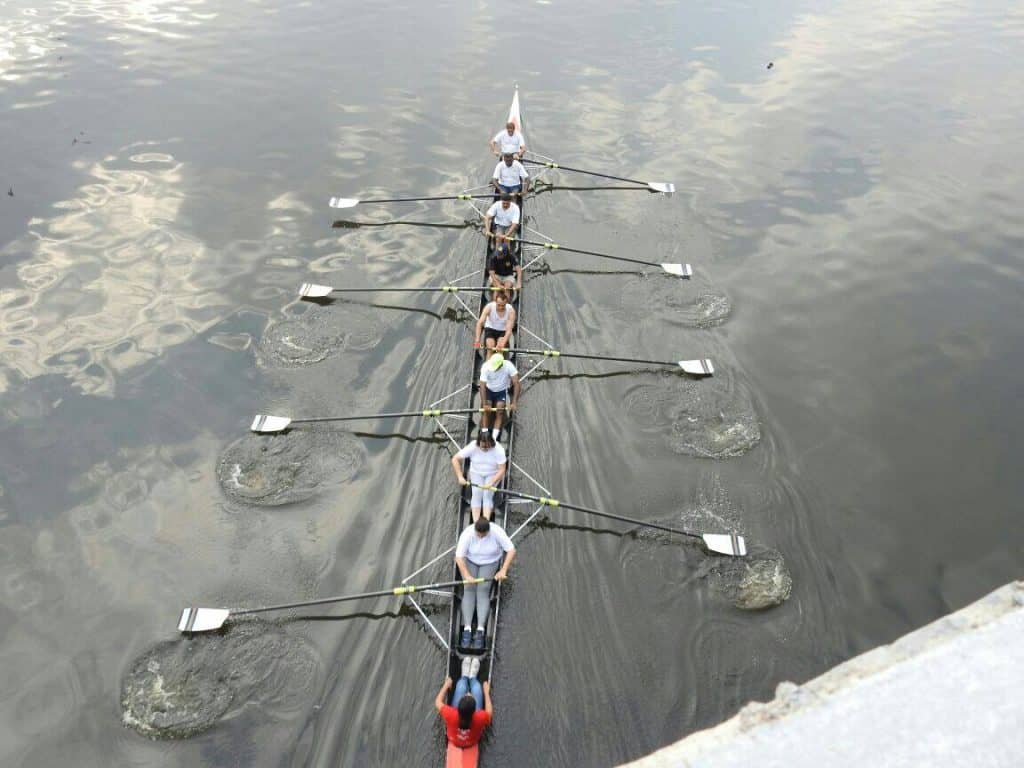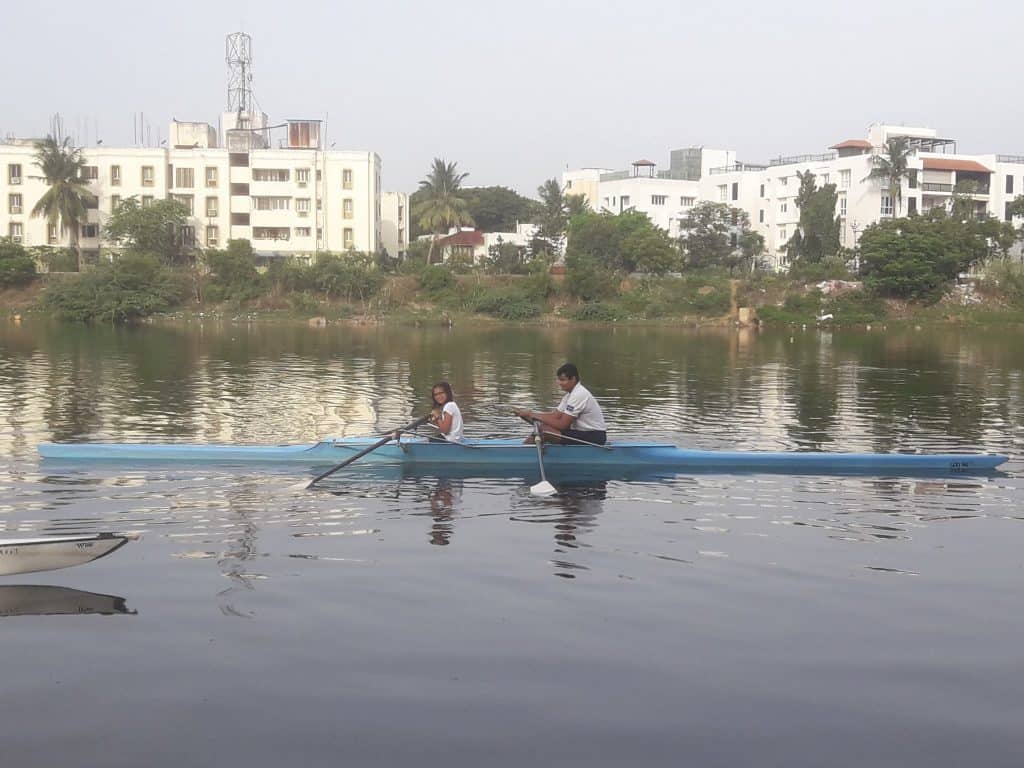Imagine a walk on the Kotturpuram bridge on any morning or evening – a glance below provides a picturesque sight: people shouting in happiness, their row boats on the tranquil waters of Adyar River, free from traffic. The happiness on their faces is evident; it makes you feel the joy of rowing. You cannot help thinking how beautiful the journey of these rowers would be — navigating in the seemingly serene waters, encountering fish and feeling the cool breeze.
But the reality is quite different. And ugly. The breeze carries the stench of sewage, often unbearably foul. And what rowers witness in the water are plastic, garbage and bloated carcasses, not marine life.
The Adyar river is the learning space for the rowers from the 150-year-old Madras Boat Club. Raw sewage let indiscriminately into the river from households and commercial spaces have turned the river filthy, but not entirely unfit for rowing purposes.
From the days of yore
The river that winds through Chennai from Chembarambakkam lake in Kancheepuram district, facilitates rowing near a few stretches such as Kotturpuram, Cosmopolitan Bridge, St Patrick’s bridge and Malar Hospital. Unlike in Anakaputhur and Gowl Bazaar near Pallavaram, where the flow is rough, the river is calm in the city.
“We savour the pleasure of moving the boat through the water. Nothing else matters,” said Savithri Chanda, a rower from the Madras Boat Club. Savithri is the second generation rower from the Chanda family, who followed in the footsteps of her father, Borun Chanda and elder sister, Shankuntala Chanda. Now, the children of Savithri and Shakuntala row on the Adyar waters, thus making it truly a family sport.
The tales from the three generations portray the slow, yet continuous deterioration of the Adyar river. The late Borun Chanda had many feathers in his cap. He was the national coach, captain, Former President of Madras Boat Club and one of the founding members of Rowing Federation of India and Tamil Nadu Amateur Rowing Association. Recollecting the stories she has heard from her late father, Savithri said: “During my father’s time in 1970’s, the river was much cleaner, though not the cleanest. My dad had rowed beyond the Cosmopolitan Club, which remains a far-fetched dream now.”
A terrific journey
Rowers no longer prefer to sail towards Cosmopolitan club, as the water is visibly contaminated, with bubbles and foam on the surface from the untreated sewage. “That part of the Adyar River is no longer pleasant to explore. We have lost it to indiscriminate pollution,” She said.
The unchecked destruction of the Adyar river was witnessed primarily by the second generation of the Chanda rowers in the 1990’s. Shakuntala Chanda, first lady captain and Former President of Madras Boat Club, reminisces about the days of spotting varieties of fish in Adyar river. “Fishermen would sail in catamarans from Besant Nagar till the Boat Club and head home with a good catch. More often, fish would jump into our boats, making it a fun-filled drift. We used to go till the Cosmopolitan Club and also the Broken Bridge where the river meets the Bay of Bengal,” Shakuntala said, as she travelled wistfully down memory lane.
The family knows all about the Adyar River — how it is choppy during evenings and calm in the mornings; the places of the worst contamination and when dead bodies are spotted. “During summer when board exam results are out, you spot at least two dead bodies a day,” Savithri added. In addition, the amount of plastic and other debris thrown into the river shows no sign of abating at all.
Death of traditions
The Madras Boat Club called off many interesting rowing games due to the toxic water. As part of the Pagal Regatta, rowers would climb onto a greasy pole and knock others down with a sack of hack. “The intention behind conducting these games is to let rowers take a dip in Adyar river. The club cancelled it over 15 years ago, due to the toxicity,” the sisters said. In many such competitions, rowers would be swung and thrown into the water.
Rowers these days take a tetanus shot, if they accidentally fall in the water. “My son, Johaan, has fallen twice in the mucky waters. He took proper medication and got back to the sport,” Savithri said. As the water is viscous due to contamination, rowers have to apply a lot of pressure, the factor that comes to their advantage. “Our water is the dirtiest and thickest vis-a-vis the other clubs in India. It is tough to navigate, the factor that makes you a rowing expert,” the sisters chuckled. Rowing in the river has certainly made them see the bright side of life.
A ray of hope
Johaan and Diya, the third generation rowers from the family are the active rowers now. The crazy tales from the previous generations leave a sense of sorrow in Johaan who wishes that the river regains its sheen. “People are still awestruck that I row in the filthy Adyar river. I cannot help a sense of pain when I watch the videos of rowers in clean rivers in other countries,” says Johaan, who has been rowing for the past four years. Surely none of those he sees in those videos would have fallen into the water when their boat collided with a floating body!
The Chanda family voices the question that is on the minds of many Chennai residents – when, if ever, will my Adyar river be clean?



